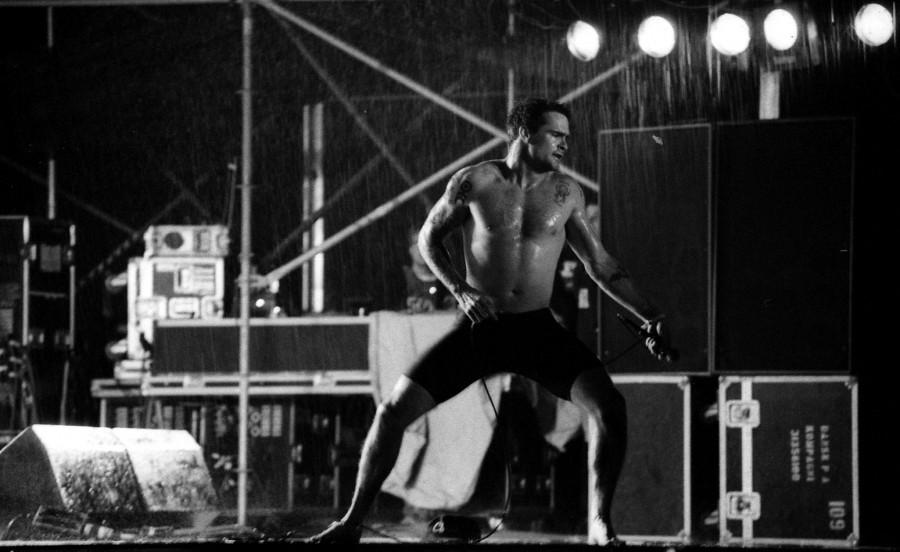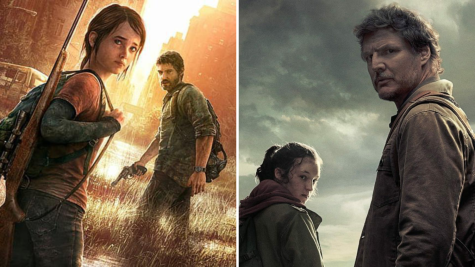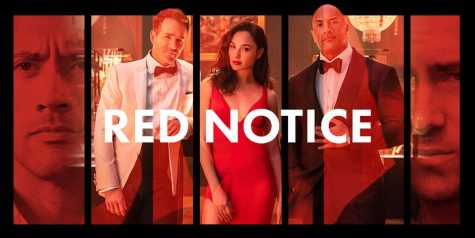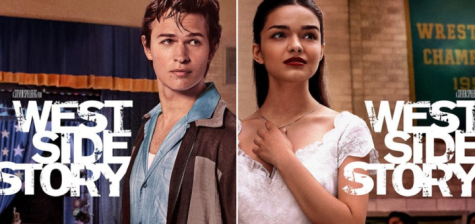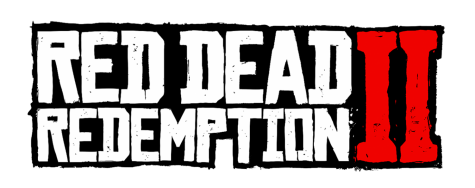The time is now for independent music
Google image/Creative Commons license
Henry Rollins was the front man for Black Flag for five years in the 1980s.
The music industry is greedy. It wants money. It wants artists who make money—for the industry. This greed has opened a new sub-culture among artists that is becoming bigger and a whole lot better than the industry.
The time for artistic independence is now.
Gerg Anidem, who runs Indie Scene Radio, a radio station headquartered in Framingham and streaming to more than 127 countries, has 56,000 monthly listeners and supports the indie market by playing strictly independent music.
“It was much easier to get a contract in the ’50s and ’60s than it ever was today,” Mr. Anidem said.
So how are things better now, you ask?
Music genres were created and implemented by the industry to promote sales in those two decades. There were only a few genres that dominated the industry: rock, pop, and R&B.
The number of bands and any variants of those narrow categories, not to mention the volume of music actually performed, was a fraction of what it is today, so less competition meant a higher chance of getting signed.
In the ’60s, Warner Bros., CBS, RCA Victor, Capitol-EMI, Polygram, and MCA were the major labels that dominated the market. As the ’70s rolled around, doors really started to open for independent artists. The punk sub-culture of the time, lasting into the early ’80s, gave rise to this growing movement with bands such as Black Flag and Death paving the way.
Anti-establishment music started to change the industry with more bands moving towards the DIY (Do It Yourself) style of making and marketing music.
Now, the major-label market is almost completely owned by Universal Music Group and Sony Music Entertainment, Inc. These labels swept through the industry and bought out the competition, leading to market dominance and a narrowing of the scope of what the average listener hears on mainstream radio.

The Capitol Records building is iconic in Los Angeles–and a symbol of mainstream control of the music industry.
Satellite radio and stations like Mr. Anidem’s provide alternative, niche choices and audiences, but the chances of major-label success for any band is miniscule.
The idea behind producing independent music is pretty simple: complete control over production and distribution which allows artists to avoid compromising their values and style to fit the needs of record labels.
DIY music was not just a punk movement. When music started to branch off into more than just four or five major genres and bands started to experiment with more sounds and ideas, more artists started to go down the DIY route, creating and releasing their own records.
Bands realized they didn’t need major labels to succeed and a lot of times bands would start their own labels to release their albums. Black Flag released their albums through SST Records, which guitarist Greg Ginn founded. Black Flag is regarded as a pioneer of the do-it-yourself route.
With the rise of the internet, DIY music has reached an all-time high.
Matt Minigell a local (and independent) musician has recently set out on a 10-date tour and released a brand new single “Lucy.” He has recorded an album (release date pending) without the help of a label.
“It’s just the way the world is going,” Mr. Minigell said. “Nobody really knows how any of this industry is supposed to work anymore, so people like you or I are just as qualified to hack it in this modern age as some of the top record company dogs.”
What does this drastic increase in independent artists and music mean for the industry?
It pretty much means that the major mainstream industry is slowly and steadily starting to diminish. Huge mainstream artists are starting to release albums through self-owned record labels because of the lack of royalties they are receiving.
Digital format has become the most popular way to consume music today. Whether it’s iTunes, Spotify, or Pandora these sites have had a huge effect on the industry and its artists.
According to David Holmes, a writer at Pando.org, iTunes pays about $0.19 per download. Pandora pays $0.000537 per play and would have to be streamed about 350 times to catch up with a single Apple download. Spotify is a little more complicated. With subscribers, the average is $0.006 per play and about half goes to the artist, but only 6 million of the 24 million users actually pay for a subscription, so streams from a non-paying user would amount to $0.00003 per play which, meaning a song would have to be streamed 600 times to equal a single iTunes download.
The more popular these digital music streaming sites get, the less money major labels get. Major labels make most of their money on tours for artists or a single song or band that they can use for advertisements.

Taylor Swift is among those going independent to gain more control over her music.
Hugely popular artists like Taylor Swift are going the independent route because of constant royalty disputes with these major music streaming services. Universal handles Ms. Swift’s distribution but she releases her albums through her own indie label, Big Machine.
As the era of physical media declines, and digital music streaming services continue to cut into traditional revenue streams, the future has never looked so bright for the independent artist.
“The internet makes it easier to write, produce, and distribute original music, and before the internet you really needed a record label to get your music out in, say, Japan,” Mr. Anidem said.
Musicians have the tools to create and distribute their music as they please without the restrictions labels place on artists, who now can make a living as indie artists, provided they have a sound strategy.
Most successful indie artists who are serious about making music full time have a specific business approach. First, they have to market everything themselves. Most indie artists put their music on almost every digital retailer you can think of, such as Soundcloud, Bandcamp, ReverbNation, etc.
Additionally, they collect performance royalties; often look for movies, videogames, etc. where they can sell and place their music; sell merchandise and CDs; have fan funding; and play shows constantly.
“You can call [DIY music] an industry because people are making money doing it themselves,” Mr. Anidem said.
To be certain, being an independent artist is far from easy, despite modern advantages. It’s a lot of work. Granted, artists will not be making millions of dollars and selling out massive stadiums, but the popularity of indie music is growing because these artists care about their craft.
They want control, instead of a label controlling them. They want to connect with their fans in a more personal way.
“I’ve found that it’s chasing the mainstream that causes people to go astray, not necessarily breaking into it,” Mr. Minigell said. “There’s nothing wrong with selling millions of records and driving a Bugatti and all that, as long as you’re proud of those records and you have fun driving the Bugatti. There’s also nothing wrong with carrying your guitar in a trash bag and giving away download cards.”
For the moment, record companies still hold most of the power. But for independent artists who want to have their voices heard, the future looks pretty bright.
“True freedom isn’t granted, it’s seized–and that’s what rock ’n’ roll is,” Mr. Minigell said.

Steven is a senior and has been attending AMSA since 6th grade. He is the resident cartoonist for The AMSA Voice. He has always had an interest in the...

